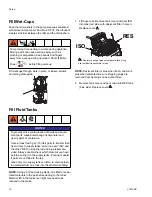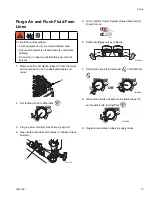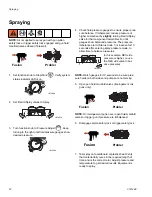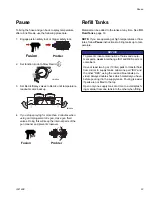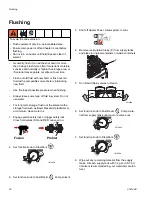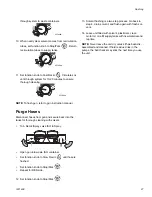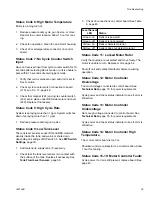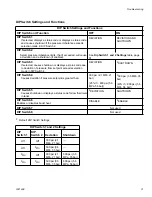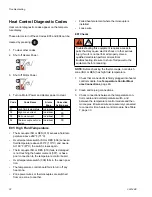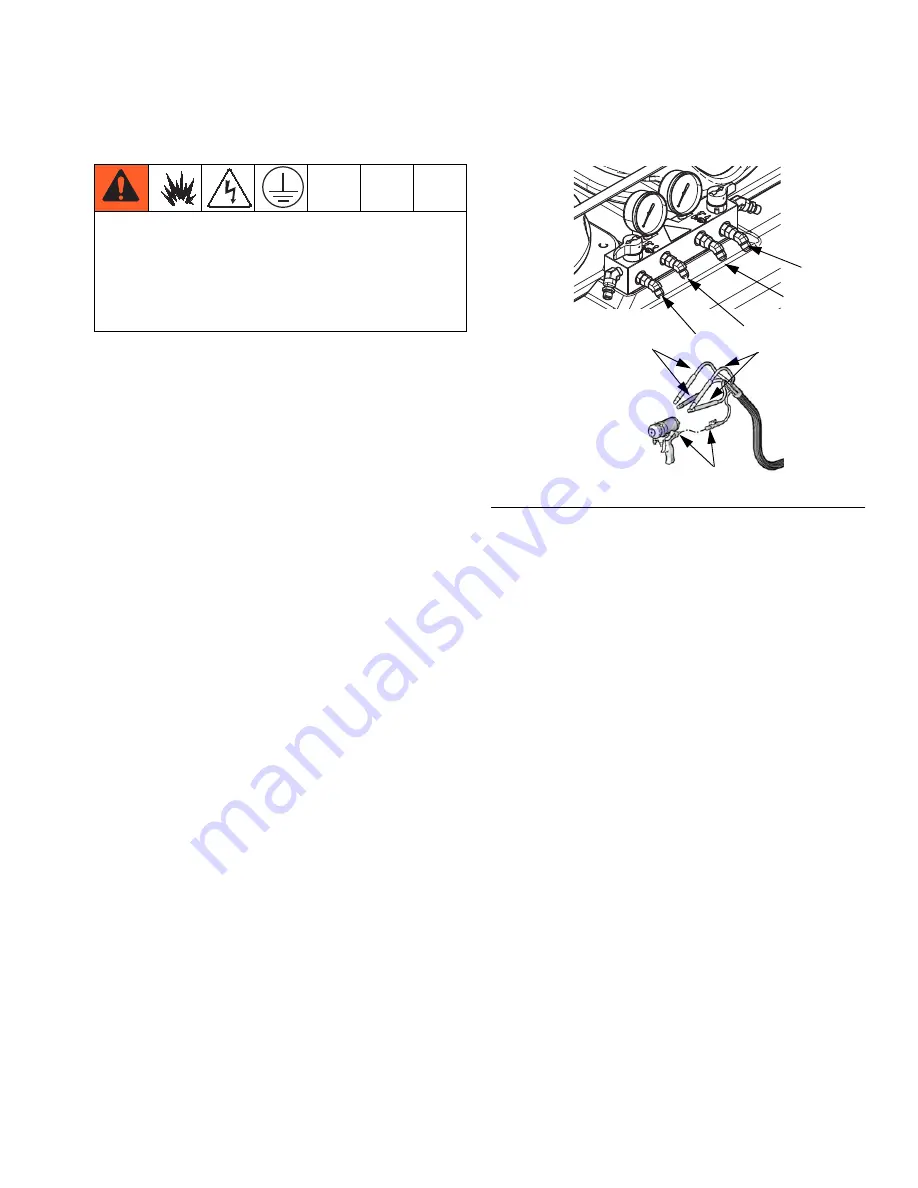
Setup
332144E
17
Ground System
Reactor: grounded through power cord.
Generator (if used): follow your local code. Start and
stop generator with power cord(s) disconnected.
Spray gun: grounded through the supplied fluid hoses,
connected to a properly grounded Reactor. Do not oper-
ate without at least one grounded fluid hose.
Object being sprayed: follow your local code.
Solvent pails used when flushing: follow your local
code. Use only metal pails, which are conductive,
placed on a grounded surface. Do not place pail on a
nonconductive surface, such as paper, plastic, or card-
board, which interrupts grounding continuity.
To maintain grounding continuity when flushing or
relieving pressure: hold a metal part of spray gun
firmly to the side of a grounded metal pail, then trigger
gun.
Connect Fluid Hoses
1.
Connect fluid supply hoses to outlet hose connec-
tions (R, F
. 5). Red hoses for ISO, blue for RES.
Fittings are sized to prevent connection errors. Con-
nect other end of hoses to ISO and RES inputs of
gun.
NOTE: Probler guns use recirc accessory kit 24E727.
2.
Connect recirculation hoses from gun recirculation
ports to connections (S).
Connect Gun Air Hose
1.
Connect gun air hose to the gun air input and to the
air filter outlet (Z). If you are using more than one
hose bundle, join the air hoses with the nipple pro-
vided with the hose bundle.
2.
On units with Fusion guns, connect the supplied ball
valve and quick-disconnect coupler to the gun air
hose, then connect the coupler to the gun air fitting.
Connect Main Air Supply
Connect the main air supply to the quick disconnect fit-
ting (Q) on the unit. Air supply hose must be at least
5/16 in. (8 mm) ID up to 50 ft (15 m) or 3/8 in. (10 mm)
ID up to 100 ft (30 m).
NOTE: Air Filter/Moisture Separator (Z) is equipped with
an automatic moisture drain.
Flush Before First Use
The Reactor is tested with a plasticizer oil at the factory.
Flush out the oil with a compatible solvent before spray-
ing. See Flushing, page 26.
The equipment must be grounded to reduce the risk
of static sparking and electric shock. Electric or static
sparking can cause fumes to ignite or explode.
Improper grounding can cause electric shock.
Grounding provides an escape wire for the electric
current.
F
IG
. 5
(RES)
(ISO)
Air
S
R
R
S
















